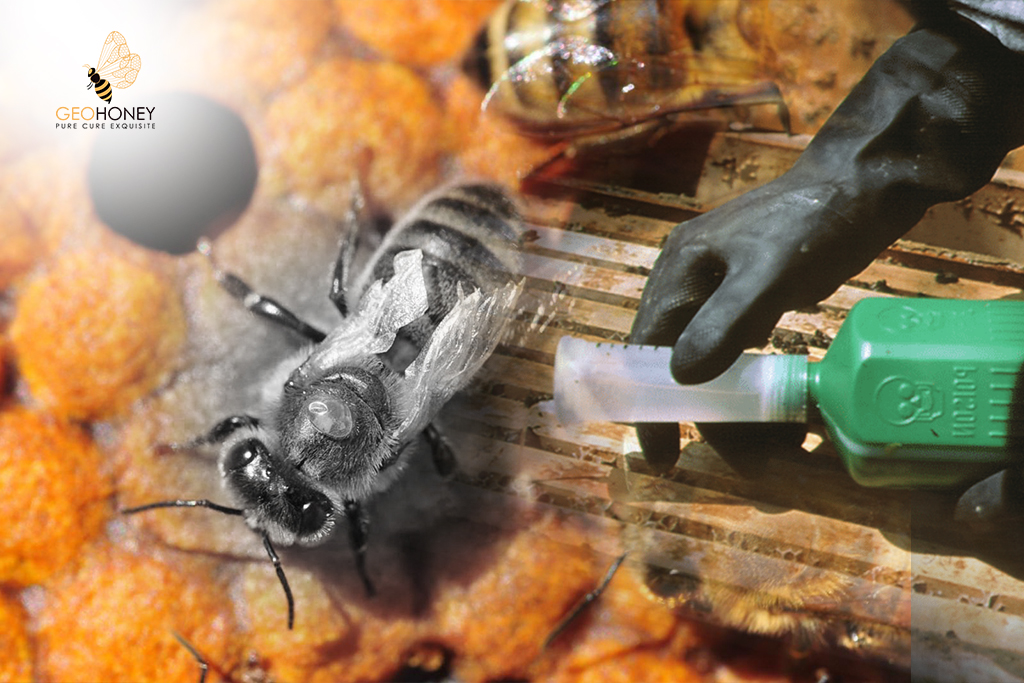- Tokyo: 21:55
- Singapore: 20:55
- Dubai: 16:55
- London: 12:55
- New York: 07:55
Oxalic Acid To Control Varroa Mites – Effects On Honey Bee Larvae and Hive Population

Varroa mites are one of the dangers the honey bee population is experiencing these days. Beekeepers all across the world battle to limit the mortality of their bee colonies caused due to Varroa destructors. Little is known regarding how varroa parasites may reduce neighborhood populaces of male honey bees (drones) that may influence the mating of queen bees.
Surprisingly, formic acid and oxalic acid have been approved to treat Varroa destructors and control this disease vector. Unfortunately, though this treatment offers beekeepers an additional option for saving honey bee hives from devastating parasites, the effects of oxalic acid on developing bees are not completely understood.
A recent study found that dosages of oxalic acid are harmful to adult honey bees if used in higher concentrations. While it has been suggested that oxalic acid should be utilized during broodless periods since it doesn't infiltrate cappings and is powerful in killing varroa mites, it is good to use it at different seasons because of the dearth of effective treatment options. The beekeepers need to know whether oxalic acid is harmful to hatchlings and at what doses to deal with their province populace consistently.
How Does Oxalic Acid Work?
The mite Varroa destructor is a leading cause of colony collapse. OA is highly toxic to mites and is toxic to adult bees only when used in high concentrations. Studies have suggested oxalic acid should be used in fall or winter to obtain effective results, but many beekeepers that are desperate to destroy mites use it at other times of the year. According to some beekeepers, oxalic acid is not very beneficial when bee colonies are in honey production. For beekeepers are hoping to use oxalic acid during honey production should keep specific key points in mind before doing so –
(1) It is suggested to go for multiple treatments while managing mites. This is because using just a solitary pesticide like oxalic acid, again and again, is how mites will develop resistance against it. Use oxalic acid as a part of your mite management strategy with other pesticides to gain better outcomes.
(2) Oxalic acid doesn't work through the cappings. During top summer, when honey supers are on, there is typically a ton of covered brood in the hive, and the more significant part of the Varroa will be in the covered brood. If you treat it right now, you will be missing a large portion of the bugs. A few beekeepers attempt to get past this by treating it several times, yet that can be harmful. It is suggested not to use this treatment at the right time to maximize damage to mites while minimizing damage to bees.
(3) When honey supers are on, there are regularly a ton of open brood cells also. Oxalic acid is known to harm open broods during honey flow, weakening the colony later in the summer.
(4) We, as of now, have medicines that are marked for use when honey supers are on and that work through the cappings — Mite Away, Quick Strips, and Formic Pro. If you live where parasite levels get high during honey creation, utilize these items instead.
According to Mr. Basem Barry, oxalic acid is an exceptional tool for beekeepers to save their hives and bees. Always keep in mind to use it at the right time and in proper quantity to avoid any problem to the bees and successfully clean up the mites. However, more robust studies and monitoring need to be conducted on bee colonies to quantify the effect of oxalic acid on destroying varroa mites.




great one...!